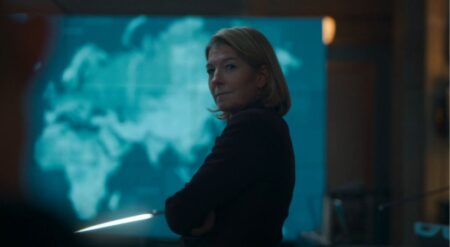
Netflix’s This is a Robbery: The World’s Greatest Art Heist spotlights the robbery of the Isabella Stewart Gardner Museum in 1990. Directed by Colin Barnicle, the four-episode docuseries is a fantastic binge about a crime many may not be aware of, and yet might be the largest of its kind: 13 works of art were stolen and never recovered. The museum is still offering a $10 million dollar reward 31 years later, in the hopes of gaining information leading to their whereabouts. This is a Robbery profiles not just the museum, but also the underground world of art theft and organized crime in Boston, Massachusetts in the eighties. It should make everyone’s watch list; even those who tend to avoid true crime series.
The night of the annual St. Patrick’s Day Parade in Boston, Massachusetts, two men dressed as police officers are let into the Isabella Stewart Gardner Museum. The next morning, the morning staff found the night guards tied up in the basement and broken frames scattered throughout the museum. One of the pieces stolen was Rembrandt’s only painted seascape: The Storm on the Sea of Galilee. There was a strong lack of physical evidence, in part due to blunders as well as procedures of the time. The series also features interviews from a wide variety of perspectives: the investigation team, the museum staff, witnesses, reporters, and even a notorious art thief who was suspected at the time.
This is a Robbery may feel lighter than many popular true crime series of late. This is not because the subject matter isn’t serious, but purely because this isn’t a chronicle of a serial killer, full of graphic crime scene photos. There is some discussion of brutal murders, especially when the series begins to investigate the mafia in Boston, but nothing graphic is shown. Barnicle’s direction does a great job of not sensationalizing the topics in a way that feels disrespectful, but giving certain moments a more lighthearted tone when appropriate. A personal favorite is when the date is shown on screen, followed by “(or so)” to match the narration of the interviewee. High-energy eighties’ music is juxtaposed well with the classical artwork in the museum, and lays an excellent backdrop for the more bonkers moments of the case.
Barnicle’s directing does a good job pacing the information throughout the four episodes. While there is excitement around the case itself, there is also a thoughtful cultural perspective on the history of the Isabella Stewart Gardner Museum in the first episode. Ultimately, it is tragic to think that these historical works of art were violently cut out of their frames, and may be irreparably damaged somewhere today. This is a Robbery consistently reminds viewers of this, cutting to shots of the empty frames still hanging in the museum as placeholders to this day.
Since the works have never been recovered, theories abound. A notable moment shows images of the many being interviewed as they looked 31 years ago, compared to now, emphasizing just how long this case has hung over them. This is a Robbery also gives cultural context to a portion of Boston in the eighties, another sign of a strong true crime documentary. Understanding the volatile nature of the Boston mafia and Irish mob at the time, as well as the many tight-knit neighborhoods they resided in, is key to understanding the elusiveness of the case. Due to the lack of physical evidence, it relied almost entirely on informants.
This is a Robbery is a great docuseries to binge, and likely to be favored even by those not generally interested in true crime. It maintains the “fun” of tracking a sometimes stranger-than-fiction caper in its editing and score, while still treating the case and its cultural context with seriousness and respect. Well-paced and often unexpected, this is a case that will intrigue many.
If you have any information about the stolen artworks, contact the Gardner Museum here.
This is a Robbery: The World’s Greatest Art Heist is streaming now on Netflix.
This is a Robbery
-
Rating - 8/108/10
TL;DR
This is a Robbery is a great docuseries to binge, and likely to be favored even by those not generally interested in true crime. It maintains the “fun” of tracking a sometimes stranger-than-fiction caper in its editing and score, while still treating the case and its cultural context with seriousness and respect. Well-paced and often unexpected, this is a case that will intrigue many.








